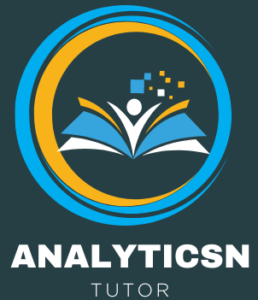Multiple Regression Analysis: A Powerful Tool for Predictive Modeling
What is Multiple Regression?
Multiple regression analysis is a robust statistical method used to examine the relationship between a dependent variable (often referred to as the outcome variable) and multiple independent variables, also known as predictors. It helps researchers assess the individual and collective impact of several predictor variables on an outcome while controlling for other variables.
In essence, multiple regression answers key questions such as:
- How do several independent variables influence a dependent variable?
- Which independent variables are the strongest predictors of the outcome?
This technique is widely used across various fields like healthcare, economics, social sciences, and business, enabling data analysts and researchers to make informed predictions and decisions.
Multiple Regression in Action
To understand multiple regression in practice, consider a scenario where researchers aim to predict blood pressure (the dependent variable) based on several independent variables such as:
- Height
- Weight
- Age
- Hours of exercise per week
- Gender
By applying multiple regression analysis, researchers can explore how each of these factors contributes to variations in blood pressure, and determine the relative importance of each variable.
The Multiple Regression Formula
The basic formula for multiple regression is:
Y=B1X1 + B2X2 +…+ BnXn+C
Where:
- Y = Dependent variable (the outcome we are trying to predict)
- X1,X2,…,Xn = Independent variables (the predictors)
- B1,B2,…,Bn = Coefficients of the independent variables (showing the strength and direction of the relationship)
- C = Constant term
The coefficients indicate how much the dependent variable changes with a one-unit change in the corresponding independent variable, holding all other variables constant. A positive coefficient suggests a positive relationship (as one variable increases, the other also increases), while a negative coefficient indicates a negative relationship (as one variable increases, the other decreases).
How SPSS Simplifies Multiple Regression Analysis
SPSS (Statistical Package for the Social Sciences) is a user-friendly tool that enables researchers to conduct multiple regression analysis efficiently. By inputting the relevant variables and specifying the model, SPSS helps generate detailed outputs that allow you to assess the strength of relationships and test hypotheses.
Steps for Running Multiple Regression in SPSS
Data Sorting: Before running the regression, ensure your data is clean and organized, with clearly defined dependent and independent variables.
Setting up the Regression Model: In SPSS, navigate to the regression analysis section and input your dependent and independent variables. Select a confidence interval of 95% to estimate the strength and significance of your predictors.
Interpreting R-Squared: The R-squared value measures how well the independent variables predict the dependent variable. It is expressed as a percentage (ranging from 0% to 100%) and indicates how much of the variation in the dependent variable is explained by the independent variables.
- For example, an R-squared of 60% suggests that 60% of the changes in the dependent variable (e.g., blood pressure) can be explained by the independent variables in the model.
- Assessing Coefficients: Review the coefficients to determine which predictors are statistically significant and how they impact the dependent variable.
Why Use Multiple Regression?
Multiple regression analysis offers numerous benefits to researchers:
- Identifies Key Predictors: Helps pinpoint which variables have the most influence on the outcome.
- Predictive Power: Allows for more accurate predictions of future outcomes by considering multiple factors.
- Controls for Confounding Variables: By including several independent variables, researchers can control for potential confounding effects.
- Actionable Insights: Facilitates decision-making by highlighting the variables that are most important to target or control in various scenarios, from business decisions to medical interventions.
Example: Predicting Outcomes in Healthcare
Consider a study where researchers are analyzing the impact of lifestyle factors on heart disease risk. Using multiple regression, they can investigate how independent variables like diet, exercise, smoking status, and family history interact to affect the risk level (dependent variable).
Through this analysis, researchers may find that exercise has a significant negative effect on heart disease risk, while smoking increases the risk substantially. This information allows healthcare providers to offer more personalized advice based on the most influential risk factors.
The Benefits of Using SPSS for Multiple Regression
SPSS makes multiple regression analysis more accessible to researchers by providing:
- User-Friendly Interface: Easily input data and run complex analyses without advanced programming skills.
- Comprehensive Output: SPSS generates detailed reports that include R-squared values, coefficients, significance levels, and more.
- Visualization Tools: Generate graphs and charts that help illustrate relationships between variables, making it easier to present findings.
- Time Efficiency: SPSS automates the calculations, allowing for quick analysis of large data sets.
How We Can Assist with SPSS Multiple Regression
If you’re new to multiple regression analysis or need help interpreting your SPSS output, our SPSS experts are here to assist. We offer comprehensive support, from setting up your regression model to writing up your results. Our team can guide you through the assumptions, equations, and interpretation, ensuring your analysis is accurate and insightful.
We provide tailored research solutions for academic, business, and professional research, using the latest statistical tools and methodologies. Whether you need help with your academic thesis, business report, or clinical research, we are here to offer quick, accurate, and reliable support.
